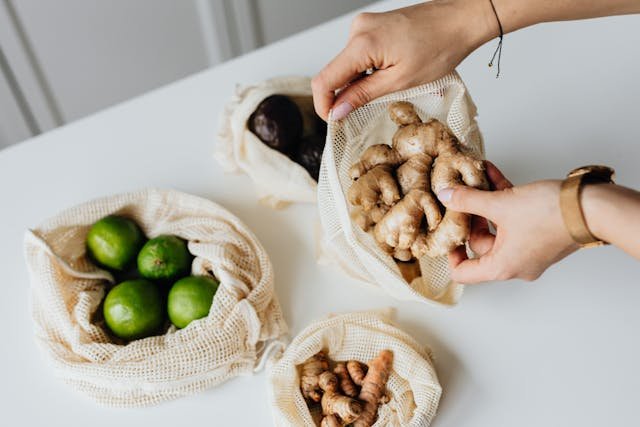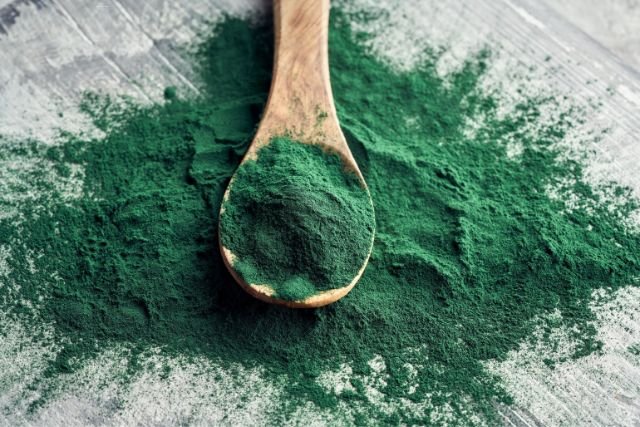Living with fibromyalgia is like juggling a million invisible symptoms—chronic pain, fatigue, brain fog, and sleep troubles. But there’s one silent villain behind the scenes that often goes unnoticed: inflammation. Research in 2025 continues to highlight the powerful connection between chronic inflammation and fibromyalgia flare-ups.
The good news? What you eat can make a real difference. Instead of reaching only for over-the-counter meds or relying solely on treatments online, you can take charge of your wellness—starting right from your kitchen. Let’s walk through 16 powerful anti-inflammatory foods that can help soothe your body and mind.
1. Turmeric: The Golden Healer
Turmeric has earned a legendary spot in the anti-inflammatory hall of fame—and for good reason.
Why it works:
Curcumin, turmeric’s active compound, blocks inflammatory pathways and reduces joint pain. A 2024 study in the Journal of Pain Management found that fibromyalgia sufferers who took 500 mg of curcumin daily saw a 35% reduction in pain and stiffness.
How to use it:
- Mix turmeric into smoothies, soups, or golden milk.
- Sprinkle it on roasted veggies.
- Combine turmeric with black pepper to boost absorption naturally.
2. Ginger: Nature’s Pain Reliever
Ginger is more than a cozy tea ingredient—it’s a potent inflammation-fighter.
Why it works:
Gingerols and shogaols, its active compounds, have similar effects to NSAIDs. They help reduce inflammation, muscle soreness, and morning stiffness.
How to use it:
- Grate fresh ginger into stir-fries or oatmeal.
- Drink ginger tea daily.
- Keep a jar of candied ginger in your bag for on-the-go support.
3. Salmon: Omega-3 Superstar
Not all fats are created equal—omega-3 fatty acids are crucial in fighting inflammation.
Why it works:
EPA and DHA in salmon help regulate immune responses and reduce pain sensitivity. Inflammation markers like CRP (C-reactive protein) drop significantly with consistent omega-3 intake.
How to use it:
- Eat 2–3 servings of wild-caught salmon per week.
- Add canned salmon to salads for a quick meal.
- Grill salmon with lemon and herbs for a simple anti-inflammatory dinner.
4. Blueberries: Antioxidant Burst
These tiny berries are antioxidant-rich and a sweet weapon against inflammation.
Why it works:
Loaded with anthocyanins, blueberries help decrease oxidative stress—an underlying factor in fibromyalgia pain.
How to use it:
- Blend into smoothies.
- Top your morning oats with a handful.
- Freeze in snack-sized bags for quick munching.
5. Leafy Greens: Fibro’s Green Friends
Spinach, kale, and Swiss chard do more than support iron—they tackle inflammation at the root.
Why it works:
Greens are full of polyphenols and vitamins A, C, and K—nutrients essential for lowering inflammation levels.
How to use it:
- Toss into soups, wraps, and smoothies.
- Massage kale into salads with olive oil.
- Grow leafy greens at home in a windowsill garden.
6. Chia Seeds: Tiny But Mighty
These little seeds pack a punch when it comes to balancing your body’s inflammation response.
Why it works:
Rich in omega-3s and fiber, chia seeds promote gut health—where inflammation often begins.
How to use it:
- Stir into yogurt, smoothies, or overnight oats.
- Mix with water for a quick pudding.
- Carry a small jar and sprinkle on-the-go meals.
7. Extra Virgin Olive Oil: Liquid Gold
One of the staples of the Mediterranean diet, olive oil is anti-inflammatory by nature.
Why it works:
Packed with oleocanthal, it mimics the effects of ibuprofen without the side effects.
How to use it:
- Drizzle over roasted vegetables or salads.
- Replace butter in cooking.
- Use as a simple dip with fresh herbs for gluten-free bread.
8. Walnuts: Brain and Body Boosters
Walnuts are rich in ALA, a plant-based omega-3, and have been linked to better cognitive function.
Why it works:
They help reduce inflammatory cytokines and support brain clarity—great for tackling fibro fog.
How to use it:
- Snack by the handful.
- Chop and add to roasted veggies.
- Keep a stash in your purse for brain-friendly energy.
9. Pineapple: Tropical Anti-Inflammatory
Sweet and refreshing, pineapple contains bromelain—an enzyme that reduces swelling and pain.
Why it works:
Bromelain has shown promise in reducing inflammation in muscles and connective tissues.
How to use it:
- Blend into a morning smoothie.
- Grill pineapple slices for dessert.
- Juice fresh pineapple with ginger for a natural pain-soothing shot.
10. Green Tea: Calm in a Cup
More than a relaxing ritual, green tea is a fibro-fighting beverage.
Why it works:
EGCG (epigallocatechin gallate), its primary antioxidant, lowers inflammation and boosts mitochondrial function.
How to use it:
- Sip 2–3 cups daily.
- Brew cold green tea with lemon for summer refreshment.
- Use a French press to brew a strong batch for the day.
11. Sweet Potatoes: Nutrient-Rich Comfort Food
This cozy carb is packed with fiber and inflammation-fighting nutrients like beta-carotene.
Why it works:
Sweet potatoes regulate blood sugar, which helps reduce inflammatory flare-ups.
How to use it:
- Roast with herbs and olive oil.
- Mash with coconut milk.
- Bake a batch on Sunday for easy weekly meals.
12. Avocados: Healthy Fat Magic
Creamy and satisfying, avocados are rich in anti-inflammatory monounsaturated fats.
Why it works:
They help regulate inflammatory responses and support joint health.
How to use it:
- Add to toast, salads, and smoothies.
- Use as a base for dressings or dips.
- Store with the pit to keep it fresh longer.
13. Beets: Rooted in Relief
Beets contain betalains, powerful anti-inflammatory compounds often overlooked.
Why it works:
Betalains help reduce oxidative stress and support liver detox—critical for reducing inflammation.
How to use it:
- Roast and toss in salads.
- Juice with carrots and apples.
- Grate raw beets into slaws or wraps.
14. Broccoli: The Flare Fighter
Broccoli may not be glamorous, but it’s packed with sulforaphane—a powerful antioxidant.
Why it works:
Sulforaphane reduces cytokines linked to pain, fatigue, and stiffness in fibromyalgia.
How to use it:
- Steam, roast, or stir-fry.
- Add to casseroles or soups.
- Use in an egg frittata for breakfast relief.
15. Flaxseeds: Hormone Balancers
Flaxseeds support hormone regulation and reduce inflammatory triggers.
Why it works:
High in lignans and omega-3s, flaxseeds reduce joint stiffness and support gut health.
How to use it:
- Sprinkle ground flax on cereal or baked goods.
- Mix into smoothies or yogurt.
- Keep a small grinder nearby to unlock fresh oils.
16. Dark Chocolate (70%+): The Sweet Exception
Yes, you read that right—chocolate can be anti-inflammatory if you choose the right kind.
Why it works:
Dark chocolate is full of flavonoids that reduce inflammation and improve mood—both crucial for fibromyalgia warriors.
How to use it:
- Eat a square after dinner.
- Shave into oatmeal or smoothies.
- Choose chocolate with no added dairy or sugar.
Final Thoughts: Eat to Heal, Not Just to Survive
Inflammation might be a sneaky root cause behind fibromyalgia’s many symptoms, but you can absolutely take back control. Incorporating anti-inflammatory foods isn’t just about restriction—it’s about empowerment.
By blending simple offline choices like roasting veggies or sipping tea with smart online strategies—such as tracking recipes or learning new combinations—you create a self-care routine that supports long-term healing.
Healing starts from the inside out—so eat with intention, rest when needed, and give your body the fuel it deserves. Remember: you’re not alone on this journey, and small steps make the biggest difference.
Save this post, share it with a fellow fibro warrior, and begin your inflammation-fighting journey today.










